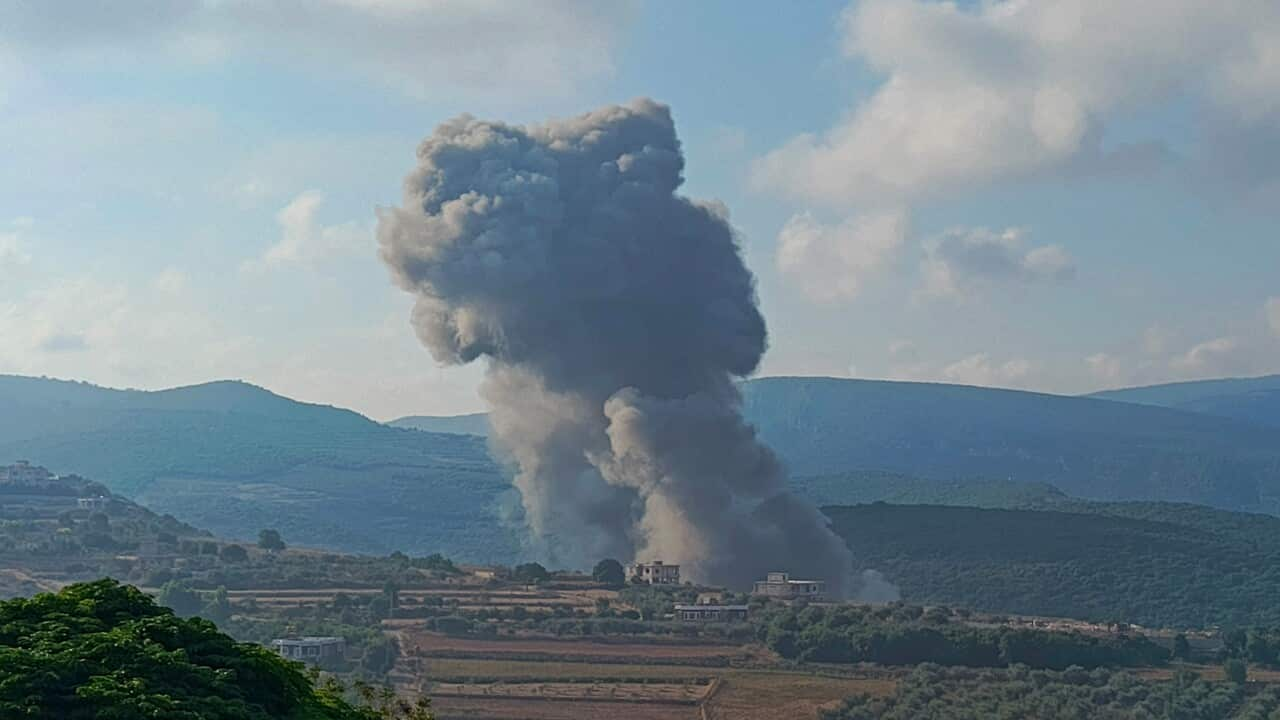Key Points
- Hezbollah launched hundreds of rockets and drones from Lebanon into Israel on Sunday.
- Israeli jets struck dozens of Hezbollah launch sites in southern Lebanon shortly before the Hezbollah strikes.
- It was one of the biggest exchanges of fire between the two sides since Hamas’ October 7 attacks.
Hezbollah has launched hundreds of rockets and drones at Israel as Israel’s military said it struck Lebanon with about 100 jets to thwart a larger attack, in one of the biggest clashes in more than 10 months of border warfare.
Missiles were visible curling up through the dawn sky, dark vapour trails behind them, as an air raid siren sounded in Israel and a distant blast lit the horizon while smoke rose over houses in Khiam in southern Lebanon.
Any major spillover in the fighting, which started in parallel with the Hamas-Israel war, risks morphing into a regional conflagration drawing in and Israel’s main ally the United States.
With three deaths confirmed in Lebanon and one in Israel, both sides indicated they were happy to avoid further escalation for now but warned that there could be more strikes to come.
Hezbollah leader Sayyed Hassan Nasrallah said the group’s barrage, a reprisal for , had been completed “as planned”.
However, the group would assess the effect of its strikes and “if the result is not enough, then we retain the right to respond another time,” he said.
Israel’s foreign minister said the country did not seek a full-scale war but Prime Minister Benjamin Netanyahu warned: “This is not the end of the story.”
Earlier, Netanyahu had said: “We are determined to do everything we can to defend our country … whoever harms us — we harm him”.
Expectations of an escalation had risen since a missile strike in the Israeli-occupied Golan Heights last month killed 12 youngsters and the Israeli military assassinated Shukr in Beirut in response.
Israel’s air strikes started before Hezbollah began its barrage, Nasrallah said.
Netanyahu said these “pre-emptive” strikes had foiled a much larger Hezbollah barrage but Nasrallah said they had had little effect.
Hezbollah’s own rocket and drone strikes were focused on an intelligence base near Tel Aviv, Nasrallah said.
Netanyahu said all the drones targeting what he called a strategic location in central Israel were intercepted.
A security source in Lebanon said at least 40 Israeli strikes had hit various towns in the country’s south in one of the densest bombardments since hostilities began in October.
Warnings against further escalation
US General CQ Brown, the chairman of the Joint Chiefs of Staff, arrived in Israel on Sunday as part of a regional tour aimed at preventing escalation.
He is expected to meet senior Israeli military officials.
The United Nations peacekeeping force in Lebanon and the UN’s special coordinator’s office in the country called on all sides to cease fire, calling the developments “worrying”.
Egypt, one of the mediators in Gaza ceasefire talks, warned against the dangers of a new war front opening in Lebanon.
Jordan also warned against more escalation.
Hezbollah fired missiles at Israel immediately after the October 7 attacks by Hamas militants on Israel.
Hezbollah and Israel have been exchanging fire constantly ever since, while avoiding a major escalation as war rages in Gaza to the south.
Hamas representative Osama Hamdan told al-Aqsa TV on Sunday the group is sticking to a 2 July Gaza ceasefire proposal and rejected new Israeli conditions for a ceasefire and said talk of an imminent deal is false.
